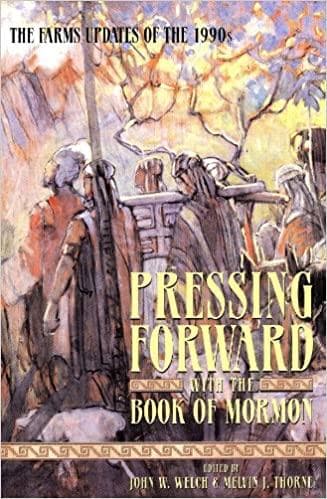Book
69 Chapters

“The law was engraven upon the plates of brass.” (1 Nephi 4:16)
Lehi sent his sons back to Jerusalem to obtain scriptures engraved on “brass plates” (see 1 Nephi 3 and 4). Later we read that Lehi and his son Nephi kept records on metal “plates” (see 1 Nephi 6 and 9). These incidents raise the question: Did others in Lehi’s Jerusalem inscribe records on metal plates?
The use of metal plates upon which records are inscribed is fairly well attested throughout the Middle and Far East from many centuries before to many centuries after Lehi, but none so far appear to be from Lehi’s seventh-century B.C. Judea.1
This lack of metal inscriptions from Judea could be interpreted to mean that (1) Judeans did not write on metal plates, or (2) archaeology has not found artifacts which would support the practice of writing on metal plates in seventh-century B.C. Jerusalem. Alternative 2 seems to have been the problem, for inscribed silver plates have been excavated only recently.
Dr. Gabriel Barkay of the Institute of Archaeology, Tel Aviv University, directed an excavation on a ridge behind modern Jerusalem’s railroad station and next to the Scottish Presbyterian Church of St. Andrew. The dig was begun in 1979, and in 1980 the team opened a tomb that dates to the end of the seventh century and the beginning of the sixth (or about 600 B.C.). Dr. Barkay notes that “Among the rich finds in the repository were two small, rolled-up strips of silver. Similar artifacts are completely unknown elsewhere in the archaeology of this period.”2
It took three years to unroll the strips of silver, which were about one inch by four inches. One of the exciting facts is that the strips of silver had been inscribed. In 1983 only the Divine Name could be read. This consists of the four Hebrew letters yod-hey-vav-hey, YHWH, which are translated as Jehovah or Lord.
“The scribe who wrote on the strips in antiquity scratched them without much pressure, so the inscriptions sit only on the surface. It will take a long time before we are able to decipher these two texts. We can now say only that the texts are prayer-like, or amuletic, in nature.”3
Since then Dr. Barkay has published tentative translations of the two silver plates.4 Here is his suggested translation for Plate I:
The suggested translation for Plate II is as follows:
Plate I, lines 14–19 and Plate II, lines 5–12 are quotations from Numbers 6:24–26 and thus are quite readable on the plates. In fact, this text preserves an astonishingly early copy of this famous priestly blessing from the Pentateuch. The other parts of the plates are not quotations and are more difficult to read.
The conclusion for Book of Mormon studies is that the gap has been filled, and we can be certain that religious texts were written on precious metal plates in Lehi’s Jerusalem.
Research by William J. Adams Jr., originally published in the Journal of Book of Mormon Studies 3/1 (1994): 204–6.
1. See, for example, Franklin S. Harris Jr., The Book of Mormon: Message and Evidences, 2nd ed. (Salt Lake City: Deseret News, 1961), 98–108.
2. Gabriel Barkay, “News from the Field: The Divine Name Found in Jerusalem,” Biblical Archaeology Review 9/2 (1983): 17.
3. Ibid., 19.
4. See Gabriel Barkay, “Priestly Blessings on Silver Plates” (in Hebrew), Cathedra 52 (1989): 46–59.
Book
69 Chapters
Items in the BMC Archive are made publicly available for non-commercial, private use. Inclusion within the BMC Archive does not imply endorsement. Items do not represent the official views of The Church of Jesus Christ of Latter-day Saints or of Book of Mormon Central.